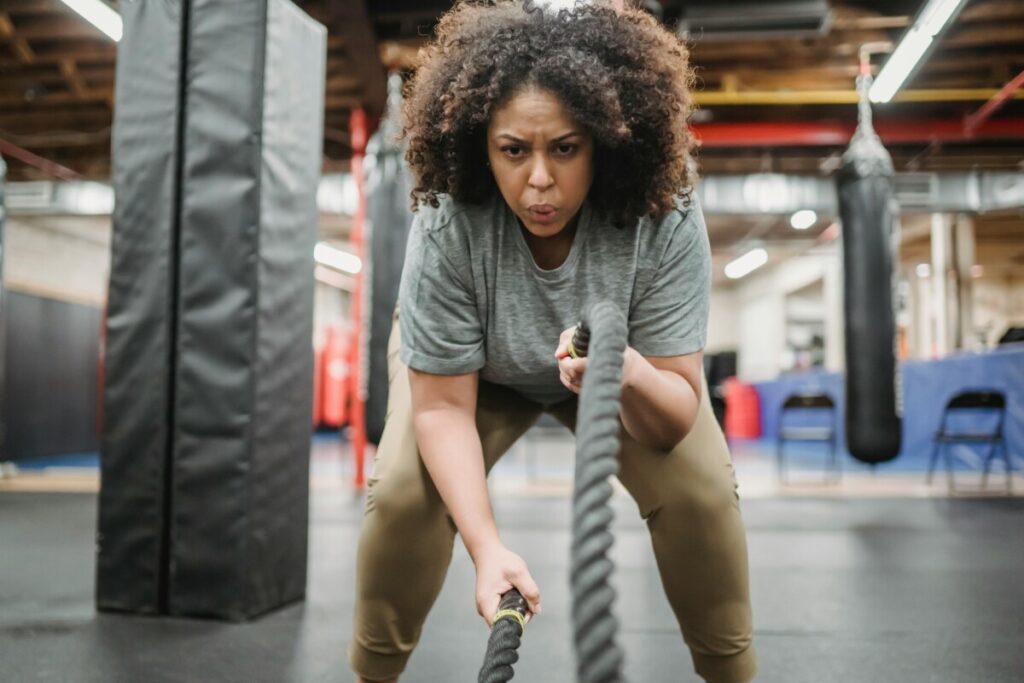Best Workout Routines for Beginners

There are countless benefits to having a successful workout routine. Regular exercise can help you stay healthy and in shape, reduce stress, and increase stamina and strength. However, achieving your fitness goals is not always easy. To make sure you can make progress and see results, you need to develop an effective and sustainable workout routine. To help you get started, this article provides the best workout routines for beginners. From understanding the benefits of strength training to incorporating cardio and recovery strategies, these tips will help you get on your way to developing a successful workout routine. With the right strategy, you can enjoy the many benefits of regular exercise and finally reach your fitness goals.
Effective Workouts
Having an effective workout routine is essential to stay on track and reach your health and fitness goals. It’s important to create a workout plan that works for you, with exercises that you enjoy and that are challenging but realistic for your body and lifestyle.
Here are some tips for creating effective workouts:
Set and achieve relevant fitness goals – make sure your fitness goals are achievable for you and are specific and measurable. This will help to keep you motivated and will provide milestones to celebrate along the way.
Stay motivated – it can be difficult to stay motivated at times but try to focus on the positive outcomes of your workouts and remind yourself why you are doing it. You can also seek out motivation from others, such as from a fitness coach or health and wellness group.
Create a sustainable routine – find exercises and workout plans that you can stick to and that you enjoy. This will help you to stay motivated and will help you to stick with your routine in the long run.
These tips will help you to create the most effective workout plan for achieving your fitness goals.
Strength Training
Strength training is an important component of any successful workout routine. It helps to build lean muscle and improve overall strength and endurance. Strength training can also help to increase bone density and reduce the risk of injury.
When incorporating strength training into a routine, it is important to select the right exercises. Choose exercises that target multiple muscle groups, as this will ensure maximum benefit from the workout. It is also important to focus on proper form to avoid any potential injuries. Start with lighter weights and gradually increase the weight as the body becomes stronger. Finally, be sure to rest between sets to allow the muscles to recover.
Cardio Workouts
Incorporating cardio workouts into your exercise regimen is absolutely vital for achieving optimal fitness. Engaging in cardio activities not only amplifies your energy levels but also works wonders for your cardiovascular well-being and torches excess body fat. From running and swimming to biking and attending invigorating aerobics classes, the options are plentiful when it comes to invigorating your cardio routine. When incorporating cardio into a workout routine, it is important to choose activities that are enjoyable and that can be done consistently. It is also important to vary the intensity of the workouts so that the body can stay challenged. Additionally, recovery time is essential for any cardio workout in order to avoid injury and maximize performance.
Proper Form

Having good form is essential for any successful workout routine. It ensures that you are doing the exercises correctly, safely, and effectively. To improve your form, focus on keeping your core tight and your back straight during any exercises. Concentrate on the muscle group you are trying to target and make sure you use a full range of motion. Additionally, use proper equipment and don’t use too much weight or momentum. When in doubt, consult a trainer for help. Proper form can decrease your risk of injuries while maximizing the effectiveness of your workouts.
Nutrition and Fitness
Having a balanced diet is essential for any successful workout routine. Eating nutritious foods helps to boost your energy levels and keep you feeling energized throughout your workouts. Eating healthier foods can also help to reduce the risk of muscle fatigue and soreness after exercise.
To maximize the benefits of your workouts, it is important to understand the connection between nutrition and fitness. Eating certain foods before and after a workout can help to fuel your body for the activity and help you recover faster. Additionally, incorporating the right macronutrients into your diet can help optimize your energy levels and provide the nutrients your body needs to perform at its best.
To ensure your diet is helping you reach your fitness goals, it is important to focus on eating nutrient-rich foods and avoiding processed, sugary, and fatty foods. Eating a balanced diet full of fresh fruits and vegetables, lean proteins, healthy fats, and complex carbohydrates will help provide your body with the energy it needs to stay active and reach your fitness goals.
Recovery Strategies
Recovery strategies are essential for a successful workout routine, as taking regular time for recovery allows the body to restore its energy and muscle strength. Foam rolling and stretching are two popular recovery strategies that can help reduce muscle tension and improve flexibility. Foam rolling can help reduce soreness and improve blood flow to muscles, while stretching can help improve flexibility and reduce the risk of injury. Additionally, recovery strategies should also include rest, hydration, and nutrition. By taking adequate time for rest, and by properly hydrating and nourishing the body, individuals can ensure their workouts are successful and that their bodies are properly recovering.
Cross-Training
Cross-training is an essential part of having a successful workout routine. It involves combining various types of physical activities to increase fitness levels and help break up the monotony of doing the same activity over and over again. Cross-training can also help to maintain a healthy balance of both aerobic and anaerobic exercises. When done properly, it can help improve performance and reduce the risk of injury.
When incorporating cross-training into your workout routine, it’s important to select activities that involve different muscle groups and that challenge your body in different ways. This can include activities such as swimming, running, cycling, weightlifting, and sports such as tennis, basketball, and volleyball. You can also combine two or more activities in a single workout session to make it more challenging and effective. Additionally, it’s important to ensure that you vary your activities from time to time in order to prevent boredom and keep your body challenged.
Fitness Progress Tracking
Tracking your fitness progress is a great way to stay motivated and keep on top of your workout routine. With effective progress tracking, you can set realistic goals and make sure that you are staying on track. To get the most out of progress tracking, it is important to understand how to measure progress.
Set measurable goals that you can track over time. Keeping detailed records of your workouts with notes of how you felt and the duration of the exercise is a great way to stay on top of your progress. Additionally, track your body measurements and track any changes in weight, muscle mass, and body fat over time. Measurements such as body fat percentage and waist circumference are also good indicators of progress. Pay attention to your overall energy levels and how you feel after a workout. This will help you understand whether or not your current workout routine is working for you.
Injury Prevention
Injuries can be a major obstacle when it comes to achieving a successful workout routine. Fortunately, there are some simple steps that you can take to reduce the risks of injury. First, it is important to warm up and stretch before and after each workout, to help reduce the risk of injury. It is also important to use proper form when performing exercises, as this can help to prevent strain and pain. Additionally, it is important to listen to your body and take rest days when needed. Finally, it is important to avoid over-training and pushing yourself too hard, as this can lead to injury. By following these tips, you can help to ensure that you remain injury-free as you work towards your fitness goals.
Conclusion
Starting a new workout routine can be both exciting and overwhelming, but with the right guidance and approach, beginners can set themselves up for success. It’s important to focus on creating a balanced routine that includes a mix of cardiovascular exercises, strength training, and flexibility work.
Here are some key points to remember:
Set Realistic Goals: Begin with achievable goals that are specific, measurable, and time-bound. This helps in tracking progress and staying motivated.
Start Slow: Avoid the temptation to dive into intense workouts right away. Gradually increase the intensity and duration of your exercises to prevent injuries and burnout.
Incorporate Variety: A varied workout routine not only keeps things interesting but also ensures that different muscle groups are engaged. Mix cardio, strength training, and stretching exercises.
Focus on Form: Proper form is crucial to avoid injuries and maximize the effectiveness of your workouts. Consider working with a trainer initially to learn the correct techniques.
Stay Consistent: Consistency is key to seeing results. Aim to exercise at least 3-4 times a week and stick to your routine.
Listen to Your Body: Pay attention to how your body responds to different exercises. Rest and recover when needed, and don’t hesitate to adjust your routine based on how you feel.
Nutrition Matters: Complement your workout routine with a balanced diet rich in protein, healthy fats, and carbohydrates. Proper nutrition fuels your workouts and aids recovery.
By following these tips, beginners can develop a sustainable workout routine that promotes overall fitness and well-being. Remember, the journey to fitness is a marathon, not a sprint. Patience and perseverance will lead to long-term success.
https://serenity7wellness.com/index.php/2024/05/17/fitness-routines-for-busy-schedules/
https://www.mensjournal.com/
https://www.planetfitness.com/
FAQs
Q: What are the best workout routines for beginners?
A: The best workout routines for beginners usually include a mix of cardio, strength training, and flexibility exercises. Starting with body-weight exercises and gradually incorporating weights can help build muscle and improve fitness levels.
Q: How can beginners build muscle effectively?
A: Beginners can build muscle effectively by incorporating compound movements like squats, lunges, and push-ups into their workout routines. Gradually increasing weight and focusing on proper form will help build strength and muscle mass.
Q: What is a good beginner workout plan to follow?
A: A good beginner workout plan typically includes a mix of full-body exercises, such as bodyweight squats, lunges, and planks. Incorporating cardio, like HIIT workouts, can also help beginners improve their fitness levels.
Q: What are some tips for beginners starting a workout routine?
A: Some tips for beginners starting a workout routine include starting slowly, listening to your body, and tracking your progress. Consistency is key, so finding a routine that you enjoy and can stick to is important for long-term success.
Q: Can beginners do at-home workouts without equipment?
A: Yes, beginners can do at-home workouts without equipment by focusing on body-weight exercises like squats, push-ups, and planks. Utilizing household items like water bottles or resistance bands can add an extra challenge to these workouts.







